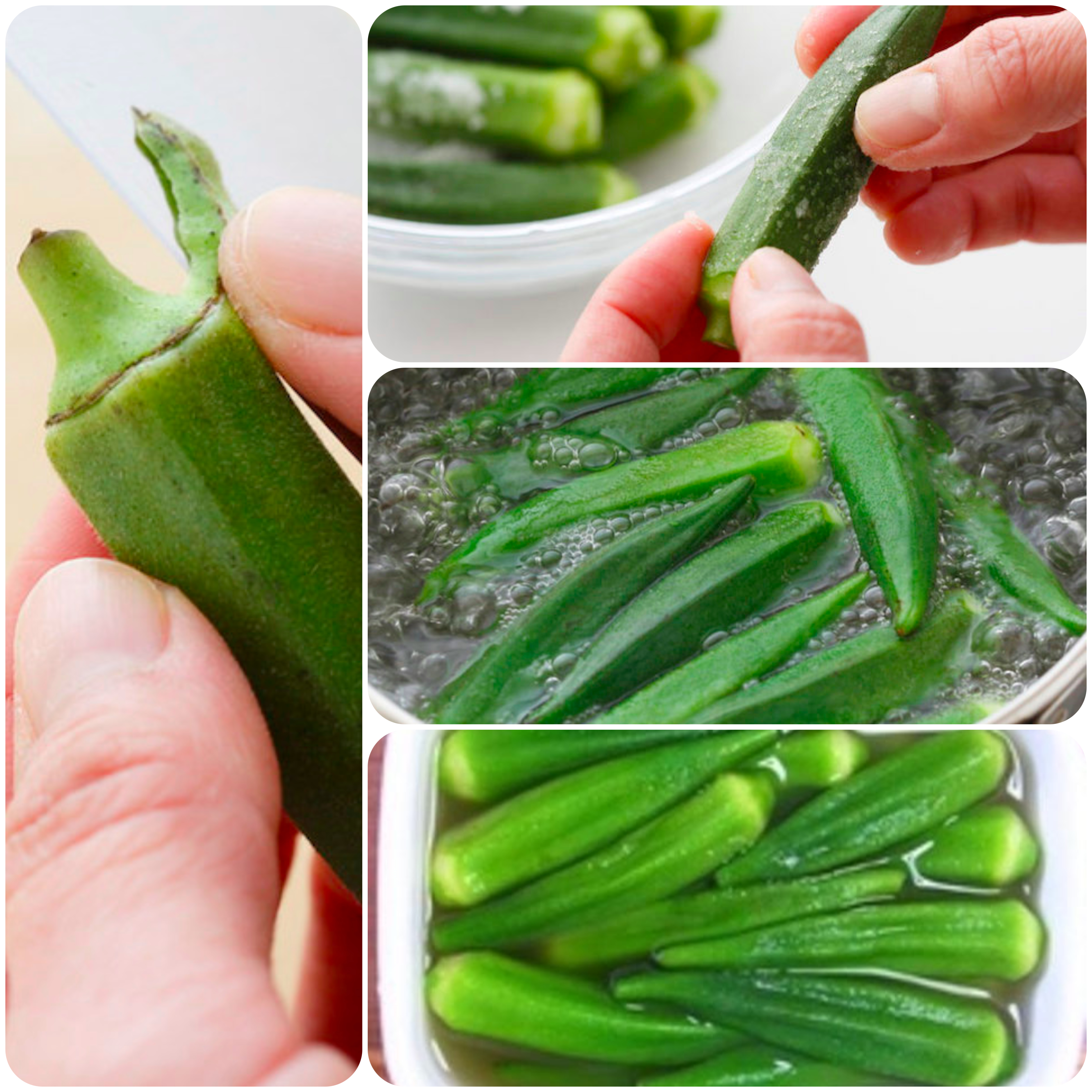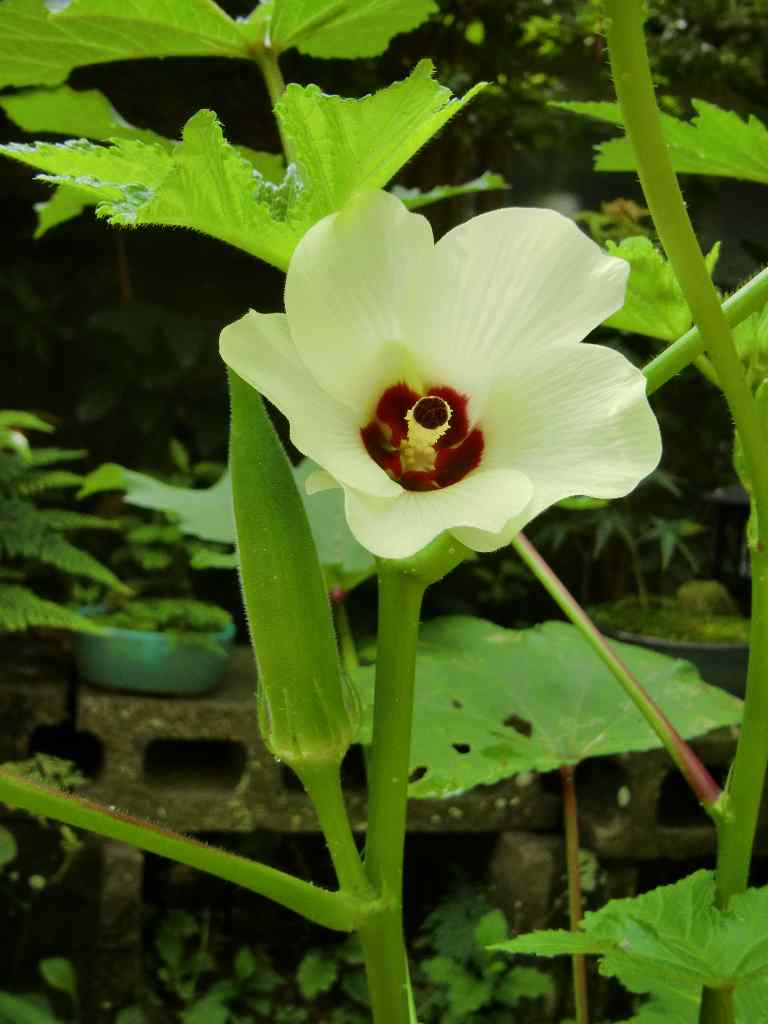
TRIM (left)・SALT-RUB (top right)・FLASH-BLANCH (center right)・STEEP (bottom right)
OKRA オクラ
The Japanese technique for preparing okra heightens its color (jade green) and flavor (reminiscent of green beans and/or asparagus) while limiting its sticky texture. There are FOUR KEY POINTS:
- Trimming away the ridge at stem end (KEZURI-TORU 削り取る)
- Salt-rubbing the pod (SHIO-ZURI 塩ずり)
- Flash-blanching (YUGAKU 湯掻く)
- Steeping in cold dashi stock or broth (HITASU 浸す)

Okra boasts beautiful flowers!
Okra (Hibiscus esculentus) is a member of the mallow family. The vegetable is believed to have originated in Ethiopia though the earliest records of its cultivation come from ancient Egypt (12th century BC).
How did okra find its way to Japan? Most likely route is through America at the end of the Edo period (1603-1868).
Slicing okra’s pods releases a sticky, viscous juice… and that nebaneba texture is what the Japanese ADORE!
DOWNLOAD recipe for Basic Prep + Broth Steeped Okra




